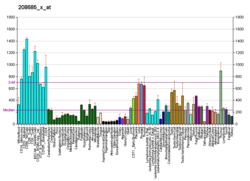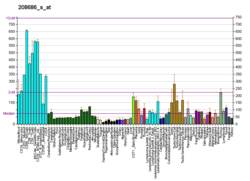| BRD2 |
|---|
 |
| Available structures |
|---|
| PDB | Ortholog search: PDBe RCSB |
|---|
| List of PDB id codes |
|---|
1X0J, 2DVQ, 2DVR, 2DVS, 2DVV, 2E3K, 2G4A, 2YDW, 2YEK, 3AQA, 3ONI, 4A9E, 4A9F, 4A9H, 4A9I, 4A9J, 4A9M, 4A9N, 4A9O, 4AKN, 4ALG, 4ALH, 4J1P, 4MR5, 4MR6, 4QEU, 4QEV, 4QEW, 4UYF, 4UYG, 4UYH, 5BT5, 5DFD, 5HEM, 5DFB, 5HEL, 5HFQ, 5HEN, 5DFC, 5IG6, 5IBN, 5DW1 |
|
|
| Identifiers |
|---|
| Aliases | BRD2 , D6S113E, FSH, FSRG1, NAT, RING3, RNF3, O27.1.1, bromodomain containing 2, BRD2-IT1 |
|---|
| External IDs | OMIM: 601540; MGI: 99495; HomoloGene: 74540; GeneCards: BRD2; OMA:BRD2 - orthologs |
|---|
|
|
|
|
|
| Wikidata |
|









